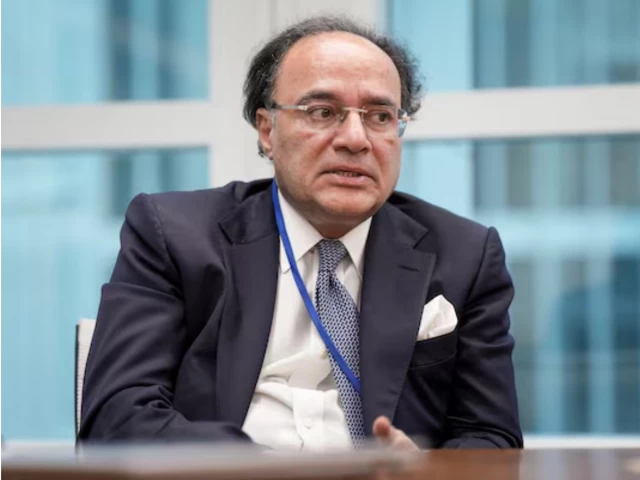Business
As holidays approach, value players Walmart and T.J. Maxx are drawing the cash-strapped and the wealthy

Sign at the entrance to a Walmart in Venice, Florida(L), and a T.J. Maxx store in Pinole, California.
Getty Images
As more major retailers post earnings, one theme is clear: Value players are winning both the wealthy and the cash-strapped.
Walmart and TJX, T.J. Maxx’s parent company, stood apart from the pack this week by hiking their full-year forecasts and expressing optimism about the start of the holiday season. Both said sales have grown as they win shoppers across the income spectrum, in the same week other major U.S. retailers Home Depot, Lowe’s and Target cut their profit outlooks and said they saw consumer reluctance to make large purchases.
In an interview with CNBC, Walmart CFO John David Rainey said the big-box retailer has seen “value-seeking and choiceful” spending patterns by consumers for the past several quarters. He said “it stands to reason, if there’s a little incremental strain on the consumer, they’re only going to become more so, they’re going to look for more value.”
And TJX CEO Ernie Herrman said the company, which includes Marshalls and Home Goods, has seen a “strong start” to the holiday quarter and is “convinced that consumers will continue to seek out value.”
Shares of both Walmart and TJX rose on Thursday, even as the three major U.S. stock indexes turned negative.
The performance of the two retailers, which are both strongly associated with compelling deals, jumps out at a moment when investors, industry watchers and economists are trying to predict retail sales during the critical holiday season and the outlook for the U.S. economy next year. Their performance could bode well for other off-price chains, such as Ross and Burlington, and value-focused players, including Dollar General, Dollar Tree, Five Below and Costco, which will report their most recent earnings in the coming weeks.
In recent months, a mix of factors have made it difficult to gauge how retailers and the broader economy will fare in the months ahead. That includes jitters about the job market following major layoffs at companies including Amazon, Verizon, UPS and Target, and concerns that the stock market has been propped up by artificial intelligence companies, contributing to the risk of an bubble. A prolonged government shutdown also muddied the waters by delaying the release of recent jobs and inflation data.
There have also been contradictions between what consumers say and do. Consumer sentiment has tumbled to nearly the lowest level ever, even as retail sales grew stronger in October, according to the CNBC/NRF Retail Monitor.
That’s led to murky holiday expectations. For example, the National Retail Federation predicted that holiday sales will grow by 3.7% to 4.2% year over year and top $1 trillion for the first time, while consulting firm PwC said consumers plan to cut their holiday spending average by 5% compared to the year-ago holiday season.
Home Depot, Lowe’s and Target put their thumbs on the scale this week. All three lowered their full-year profit forecasts and spoke of pressure on their businesses as customers hesitate to take on bigger projects or make pricier purchases.
For Home Depot and Lowe’s, the lack of consumer confidence may prolong a period of conservative spending driven by lower housing turnover. For more than two years, they have seen customers take on smaller home improvement projects rather than splurges like remodels and renovations that cost more or require financing. That pattern has held, even though they cater to U.S. consumers who typically own a home and have benefitted from home equity gains.
Lowe’s CEO Marvin Ellison said even homeowners are “not immune” to feeling shaken by news headlines about the government shutdown, higher tariffs and other policy changes that could hit their wallets — which could encourage price-sensitivity and procrastination on purchases. He said the home improvement retailer has focused on ways it can move the needle with its own strategies, such as expanding its merchandise assortment and attracting more home professionals as customers.
Target, which has faced some struggles of its own making, expects shoppers will watch prices and make trade-offs during the holiday season, such as spending more on gifts and less in other areas like decor or food, Chief Commercial Officer Rick Gomez said on a call with reporters. The retailer has cut prices on 3,000 food and home essentials and tried to attract shoppers with low opening price points, such as $1 Christmas tree ornaments.
At Walmart, Rainey told CNBC the company has “been gaining [market] share among all income cohorts, but as we noted for several quarters, they’re more pronounced in the upper-income segment.”
For TJX, Herrman said the company’s focus on value is a competitive edge. He said on the company’s earnings call that it’s blend of “brand, fashion, quality and price sets us apart from many other retailers and has served us extremely well through many kinds of retail and economic environments over the course of our nearly 50-year history.”
In a research note, retail analyst and Telsey Advisory Group CEO Dana Telsey said TJX’s repeated earnings beats “highlight the strength of its value-focused proposition, which continues to resonate with consumers amid an increasingly price-sensitive environment.”
Customers of all incomes are coming to TJX’s stores and website, but lower-income shoppers drove sales growth in most of its geographies in its latest quarter, CFO John Klinger said on an earnings call.
While Walmart and TJX have weathered cracks in the economy better than many other retailers, they’re not immune to economic weakness.
Walmart’s Rainey said that despite its strong sales forecast for the year, the retailer has spotted “pockets of moderation” among low-income shoppers as they feel more pinched than other customers. On the company’s earnings call on Thursday, he referred to the sharp disparity in wage growth between high- and low-income U.S. consumers.
He also told CNBC that the retailer noticed a pullback by customers who stopped receiving Supplemental Nutrition Assistance Program, or SNAP, benefits during the government shutdown. But Rainey said, “that’s starting to rebound now that people are receiving those funds again.”
“We’re seeing the same things that that others are, and we’re keeping a watchful eye on it,” he said on the company’s earnings call. “But again, I think Walmart is better insulated than just about anybody.”
Business
Why Did Stock Market Fall Today? Key Factors Behind Sensex, Nifty Decline On November 21

Last Updated:
Equity benchmark indices slip on Friday, ending a two-day winning run, as weak global cues dampened investor sentiment.
Why Is Stock Market Down Today?
Equity benchmark indices slipped on Friday, ending a two-day winning run, as weak global cues dampened investor sentiment. The BSE Sensex declined 400.76 points to settle at 85,231.92, while the NSE Nifty fell by 124 points to end the day at 26,068.15.
Among the 30 Sensex shares, 17 stocks closed in the red. Among the top losers were Tata Steel, Bajaj Finance, HCL Tech, Bajaj Finserv, and BEL falling by up to 2.58%. On the other hand, the gainers were Maruti Suzuki, Mahindra & Mahindra, Tata Motors PV, ITC, and Asian Paints rising by up to 1.17%.
Key factors behind Friday’s market decline
1. Nifty Metal index slides
The Nifty Metal index fell 1.4% after the government extended exemptions from mandatory quality-control rules for certain steel and stainless-steel grades — a move expected to increase imports and pressure domestic prices. Except for Adani Enterprises, all constituents traded lower, with Hindalco leading the decline.
Hindalco was also the top loser on the Nifty 50, dropping over 2% to ₹783.45, after a fire at its Novelis aluminium plant in Oswego, New York, on November 21. Novelis — which contributes nearly 60% of Hindalco’s revenue — had already recorded a $21 million charge in Q2 due to an earlier fire. The Oswego unit supplies aluminium for Ford’s F-150 truck line.
2. Selling pressure hits IT stocks
IT shares also declined as concerns over stretched valuations resurfaced. The slump in US tech stocks overshadowed Nvidia’s better-than-expected quarterly results, adding further pressure to domestic IT counters.
3. Weak global cues
Asian markets were broadly lower on Friday, tracking the sell-off on Wall Street. South Korea’s Kospi plunged more than 3%, while Japan’s Nikkei 225 slipped over 2%. Markets in Shanghai and Hong Kong also opened weak, extending the negative global sentiment. Overnight in the U.S., all major indices closed in the red, with the Nasdaq Composite falling 2.15%, the S&P 500 down 1.56%, and the Dow Jones Industrial Average losing 0.84%.
Currency movements further weighed on sentiment. The yen hovered near a 10-month low, though it saw a brief rebound after Japanese Finance Minister Satsuki Katayama hinted at possible intervention to limit excessive volatility. The U.S. dollar continued to strengthen and was on track for its strongest week in more than a month. Meanwhile, Japan’s latest stimulus package is projected to have an overall economic impact of $265 billion, adding another factor for markets to consider.
4. Fading hopes of a U.S. rate cut
Renewed uncertainty over US monetary policy also weighed on sentiment. Stronger-than-expected September job growth reduced the likelihood of a December rate cut. Higher U.S. rates typically pull capital away from emerging markets like India.
Adding to the caution, Federal Reserve Governor Lisa Cook, in a speech at Georgetown University, flagged risks to the financial system — including the rapid expansion of private credit and hedge-fund activity in the Treasury market — without providing clarity on near-term rate moves.
5. Volatility spikes
The India VIX jumped 13% to 13.68, signalling heightened uncertainty and potential for wider market swings.
Despite the early decline, analysts noted that markets remain close to record highs, and buying on dips could emerge later in the session, supported by improving earnings and firm domestic flows.
Nifty Technicals
On the technical front, Anand James, Chief Market Strategist at Geojit Financial Services, said the breakout above a month-long range keeps Nifty’s 26,550 target intact. However, Thursday’s move above the upper Bollinger band — followed by a close below — points to limited upside in the near term.
A failure to hold above 26,237 or a drop below 26,160 could shift momentum to the bears, with downside levels at 26,028–25,984, he added.

Aparna Deb is a Subeditor and writes for the business vertical of News18.com. She has a nose for news that matters. She is inquisitive and curious about things. Among other things, financial markets, economy, a…Read More
Aparna Deb is a Subeditor and writes for the business vertical of News18.com. She has a nose for news that matters. She is inquisitive and curious about things. Among other things, financial markets, economy, a… Read More
November 21, 2025, 11:19 IST
Read More
Business
NFC Meeting on December 4 to Deliberate IMF Terms and Latest Award – SUCH TV

A meeting of the National Finance Commission (NFC) has been scheduled for December 4 to discuss the implementation of IMF conditions and the new financial award.
According to sources, the meeting will focus on IMF proposals regarding changes to the NFC Award. To consult on the matter, the federal government has invited all provinces to attend the session.
Federal Finance Minister Muhammad Aurangzeb, along with the finance ministers of the four provinces, is expected to participate in the meeting.
The IMF is anticipated to support the proposals for the new National Finance Award. Sources indicated that if multiple sessions are required to finalize the award, the process could take six to eight months.
The first scheduled NFC meeting had earlier been postponed at the request of the provinces due to flood-related disruptions.
Separately, the International Monetary Fund (IMF) highlighted that corruption remains a persistent challenge in Pakistan, urging the Special Investment Facilitation Council (SIFC) to publish its first annual report.
In its Governance and Corruption Diagnostic Assessment (GCDA), the IMF stated that corruption poses serious risks to economic development and public trust.
The Fund called on the government to enhance transparency, strengthen governance structures, and immediately begin implementing a comprehensive reform agenda.
According to the report, the IMF has called on the SIFC to develop clear protocols for its operations and significantly improve transparency to ensure effective oversight and accountability.
It further recommended that the SIFC must publish its first annual report, detailing all investment deals it has facilitated, including any tax, policy, regulatory, or legislative concessions granted—along with the full rationale and the monetary value of each concession.
Business
IRCTC No Meals Confusion: Will You Still Get Free Water Bottle On Rajdhani Express?

New Delhi: Since the post-COVID period, Indian Railways has made onboard meals optional for passengers on premium trains. While booking tickets online, passengers can now choose whether they want meals during the journey or prefer to skip them. At present, meal charges are included in the ticket fare for three major trains – Rajdhani Express, Shatabdi Express and Vande Bharat Express.
When booking on these trains, passengers must indicate their preference for onboard meals. But even if someone initially declines meals, Indian Railway Catering and Tourism Corporation (IRCTC) allows them to order food later during the journey if they change their mind. Meal charges are adjusted accordingly: added to the fare if selected or deducted if declined.
A frequent point of confusion among travellers relates to the complimentary one-litre Rail Neer water bottle. Many wonder whether skipping meals also means losing the free water bottle that comes with Rajdhani and other premium train journeys. Passengers often ask if the water bottle is tied to the meal option or if it is provided independently.
Free Rail Neer water bottle is provided to all passengers, irrespective of whether they opt for meals. “The complimentary water bottle is available to everyone once onboard, regardless of meal preference,” an IRCTC official told The Indian Express.
Last month, rumours spread suggesting that the Indian Railways had removed the ‘No Meals’ option on premium trains, after some passengers noticed the IRCTC app and website prompting mandatory meal selection during ticket booking.
However, the railways clarified that the ‘No Food’ option has not been removed. It remains available during booking, though the placement on the page has been slightly adjusted. Passengers can still opt out of meals.
Skipping meals no longer affects access to the complimentary water bottle, and flexibility to order food later ensures passengers can tailor their journey according to personal preference.
-

 Tech6 days ago
Tech6 days agoNew carbon capture method uses water and pressure to remove CO₂ from emissions at half current costs
-

 Politics1 week ago
Politics1 week agoBritish-Pakistani honoured for transforming UK halal meat industry
-

 Business6 days ago
Business6 days agoThese 9 Common Money Mistakes Are Eating Your Income
-

 Sports6 days ago
Sports6 days agoTexas A&M officer scolds South Carolina wide receiver after touchdown; department speaks out
-

 Business7 days ago
Business7 days agoWhat’s behind Rachel Reeves’s hokey cokey on income tax rises?
-

 Sports7 days ago
Sports7 days agoApple scrapping MLS Season Pass service in ’26
-

 Fashion7 days ago
Fashion7 days agoAfter London, Leeds and Newcastle, next stop Glasgow for busy Omnes
-

 Tech1 week ago
Tech1 week ago$25 Off Exclusive Blue Apron Coupon for November 2025




)
)

)



